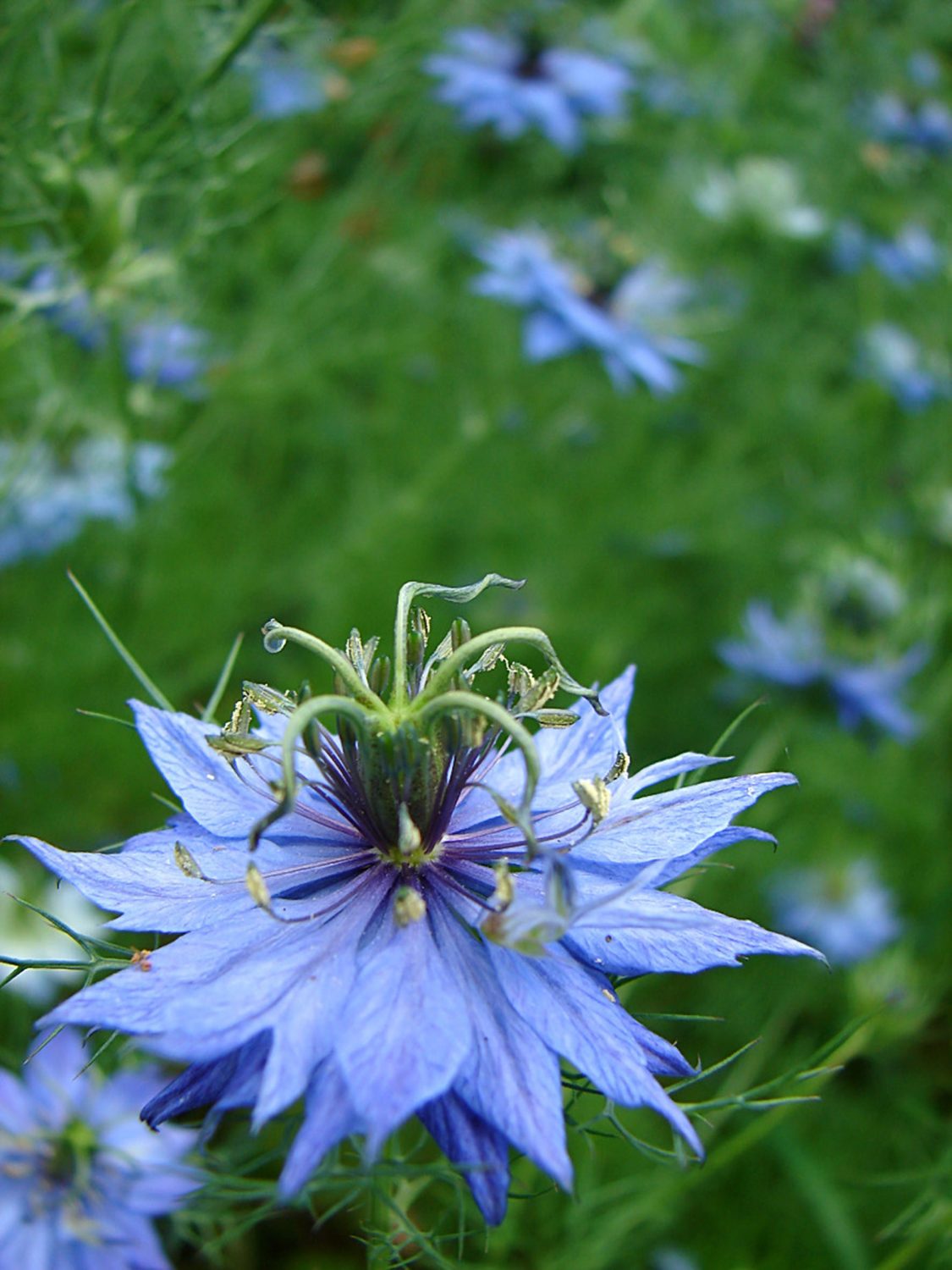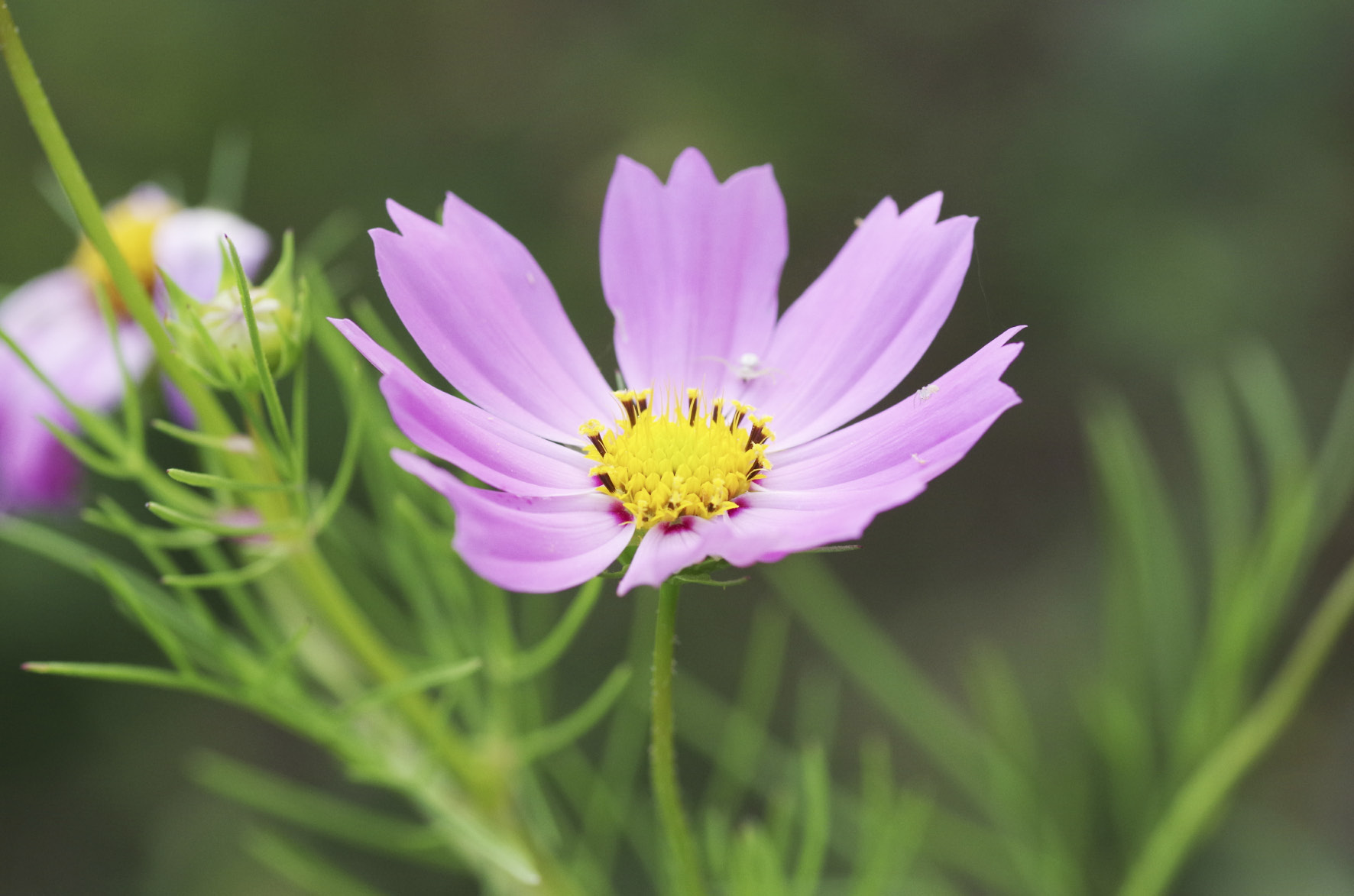What is a seed? An absolute miracle really. In botanical terms a seed is a potential plant; an embryo surrounded by its own nutrients ready to sustain life. All it needs to germinate is a combination of essential factors such as light, air, moisture and the right temperature for its particular species. And whilst many seeds can be sown at any time of the year, annuals complete their life cycle in one season, and therefore most, but not all, are sown in the spring as the light levels and the temperature begin to rise.
So seeds are hybrids or heirlooms, the latter passed down from generation to generation. Heirlooms will come true from seed and are naturally pollinated whilst the hybrids have been artificially cross pollinated to improve their qualities. These, if they self seed as many do, will not come true to the original plant but will revert back to the species. Germination will vary with naturally occurring species as they adapt to their growing conditions whilst hybrids are uniform and ‘programmed’ to do as they are told and germinate at the same time and same rate.
Some of the hardy annuals such as sweet peas can be sown in mid autumn or late winter particularly if they are being grown for exhibition as this early sowing results in particularly floriferous and strong plants. If they are sown in spring, the flowering season will be later but that’s not a problem for the domestic gardener. Sweet peas are hungry feeders and once you’ve decided where you are going to eventually plant them out, add as much organic material as you can spare. A heavy soil would benefit from autumn preparation with the soil left open for the frost to work its magic.
Sweet peas are members of the Leguminosae family and thus have hard seed coats which prevent moisture being absorbed by the seed so soaking them overnight in lukewarm water aids germination. They can then be sown immediately into containers that’ll provide the sweet pea with a long root run. RootTrainers are really useful and can be used year after year. Make sure they are thoroughly cleaned and disinfected when you dig them out of your shed to re-use. The tubes from loo rolls are perfect too.
Provided you’ve stored your seeds, whether bought or collected last autumn, in a cool dry place they should remain viable for a year or two. Fluctuations in temperature reduces the length of their viability and a fridge can be a good place to keep them at an even temperature. There are just a few rather straightforward guidelines that it might be worth mentioning should you have been carried away by the seed catalogues. There’s so much choice and it’s almost impossible to resist buying copious quantities of seed packets. I only got as far as the cover of the Chiltern Seeds catalogue before falling in love with Zinnia elegans ‘Queen Red Lime’. Zinnias have a reputation for being difficult to grow and I must say that my previous efforts haven’t been particularly successful but apparently it is a myth to think that they are tricky.
A decent sowing medium is worth spending money on, preferably peat free. Use clean pots and trays. Or try Jiffy Pellets or Jiffy Pots which are biodegradable so that the plant can eventually be planted out without any root disturbance as there’s no need to pot on. Fill the containers to within a couple of centimetres of the top and use a board or some sort of presser to level the surface. Make sure that any air pockets are removed by giving the container a good tap. Tiny seeds can be mixed with a little fine dry sand so that you can make sure that you get an even sowing. These just need to be pressed into the surface of the compost and not covered with a fine layer of compost or Vermiculite. (This is such a good seed sowing aid to all but the tiniest seeds as not only does it give support to seedlings but it stops algae growing on the surface of the compost and helps prevent rotting off. It seems that another advantage of this material is that its ‘ion exchange properties’ absorb excess nutrients in the potting medium releasing them slowly to the growing plants). Sow larger seeds separately and sow flat seeds on edge and cover them with a layer of compost as deep as the seed is in size. Water with clean tap water either from above with a fine rose or alternatively, water from below by standing the tray or pot in lukewarm water. Then label, cover with a sheet of glass or a plastic bag and set aside somewhere out of direct sunlight.
A useful tip is to sow direct into lengths of plastic drainpipe filled with potting compost. It is so easy then to gently push the seedlings, compost and all, into their final growing position when the weather is right. Early salad crops and herbs such as parsley can be sown in succession from now onwards – delicious spicy mizuna and the mustards are worth trying and actually really easy.
Once the seeds are up and established, feed them weekly with a proprietary seedling feed or add a little slow release fertiliser to the compost. The alternative to all this is to prepare the soil for direct sowing by raking it to a fine tilth and then sowing in situ. It is quite useful to mark out your sowing areas using either fine grit or sand or to make life much easier, just use a cane to mark out where you are sowing what.
Annuals to grow that attract beneficial insects into the garden would include borage with its intense blue flowers, Californian poppies (Eschscholzia californica) which come in lots of rather beautiful shades, Cosmos, easy to grow, with a long flowering period. Heliotrope for its delicious scent, Love in a mist (Nigella), and in particular Nigella papillosa ‘African Bride’ which produces startling black seed pods absolutely crammed with seed for the following year and sunflowers (Helianthus) which are fun to grow as some of them reach heights of ten feet or more. H. ‘Russian Giant’ produces seed heads of a foot across and are a beacon for birds in the autumn.
Other favourites are Consolida which is a rather different larkspur in that it has clouds of flower rather than spikes. I spotted C. ‘Dark Blue’ in a garden in Wiltshire last summer which was absolutely gorgeous but equally tempting is C. regalis ‘Cloudy Skies’, to quote: a wonderful mixture of blue, white, lavender and bicolours. And the tobacco plants are easy, easy to grow. Try the fragrant white Nicotiana alata or the dramatic N. sylvestris that can cope just as easily in the shade as in the sun. Its scent is pretty intoxicating too. Finally, a lovely little annual woodruff (Asperula orientalis) is worth a try. It is only tiny, about a foot tall, but its sky blue flowers have a delicate scent and it, like the perennial sweet woodruff, is more than happy in shade provided it is not too dry.
TEST
Nigella attract beneficial insects into the garden
- words: Sue Whigham
You may also like
In the Night Garden
Jo Arnell explains how to make the most of your outdoor space once darkness falls Some enchanted evening you may see me outside – mainly searching for slugs in the garden, because the cool hours of night are when they...
Contain your excitement
Jen Stuart-Smith discusses how to get creative with your pots and planters My love affair with plants started with houseplants when I was a child. As my bedroom windowsill overflowed – resulting, occasionally, in waking up with compost under my...
More than just a pretty face
Jen Stuart-Smith explores the multiple uses of some easy-to-grow garden favourites When you grow flowers for their beauty, shape and colour it can be easy to forget all the other qualities they have to offer. Some are edible, others provide...










